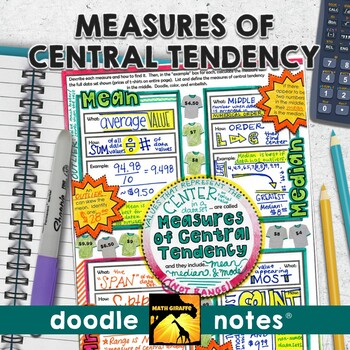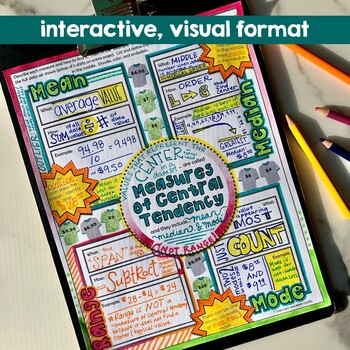Measures of Central Tendency Doodle Notes (Mean, Median, Mode, & Range)
- PDF
What educators are saying
Description
Mean, Median, Mode, and Range (Measures of Central Tendency): "doodle notes" - visual note taking pages with interactive tasks for building stronger retention of measures of center (mean, median, mode, and range) for your middle school statistics unit in Pre-Algebra
Boost your students' focus and memory! The blend of graphic and linguistic input in these guided visual notes helps students' brains to convert the information to long-term memory more easily.
When students color or doodle in math class, it activates both hemispheres of the brain at the same time. There are proven benefits of this cross-lateral brain activity:
- new learning
- relaxation (less math anxiety)
- visual connections
- better memory & retention of the content!
Students fill in the sheets, answer the questions, and color, doodle or embellish. Then, they can use it as a study guide later on.
Content includes:
- What are measures of central tendency?
- How to find mean, median, mode, and range
- Special cases - more than one mode, averaging two middle numbers to find a median, etc.
- When each measure is best (outliers, etc.)
- Example for each
Check out the preview for more detail about this item and the research behind it.
Visual note taking strategies like sketch notes or doodle notes are based on dual coding theory. When we can blend the text input with graphic/visual input, the student brain processes the information differently and can more easily convert the new learning into long-term memory.
This strategy also integrates the left and right hemispheres of the brain to increase focus, learning, and retention!
If you’d like to get the benefits of the doodle note method for your students ALL throughout middle school, get the full set:





